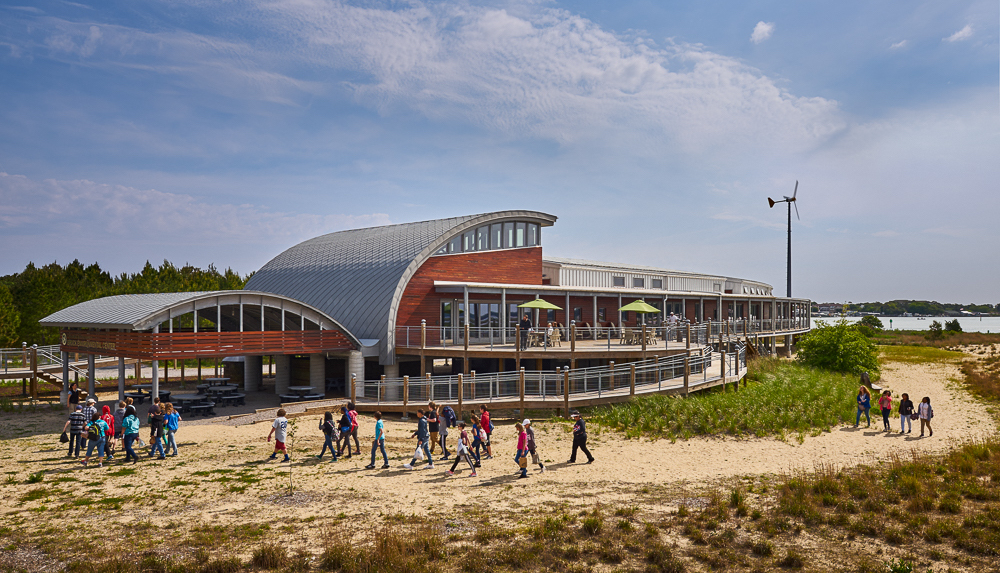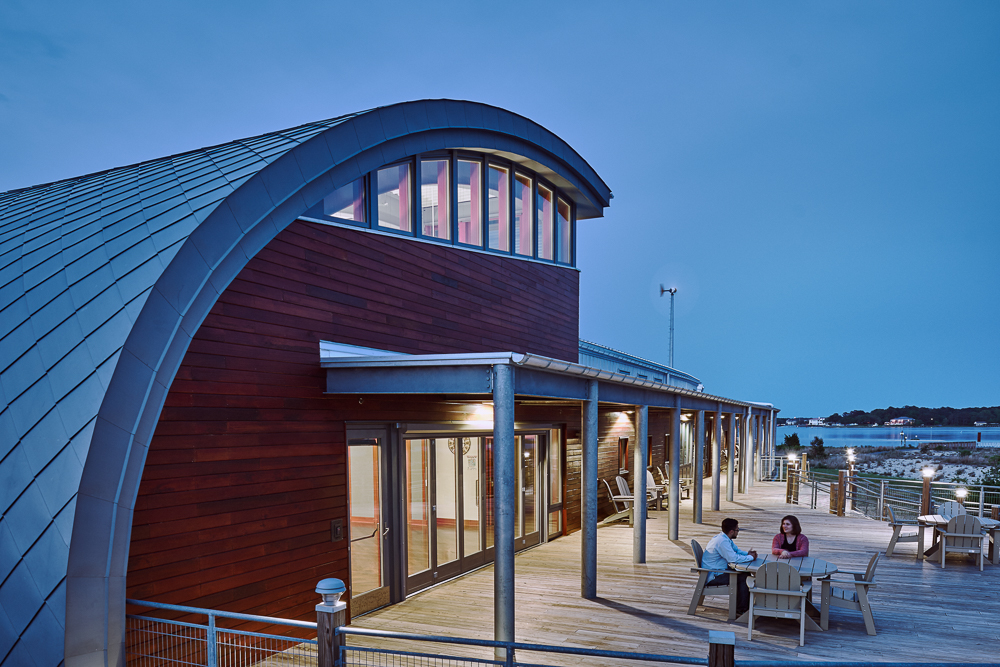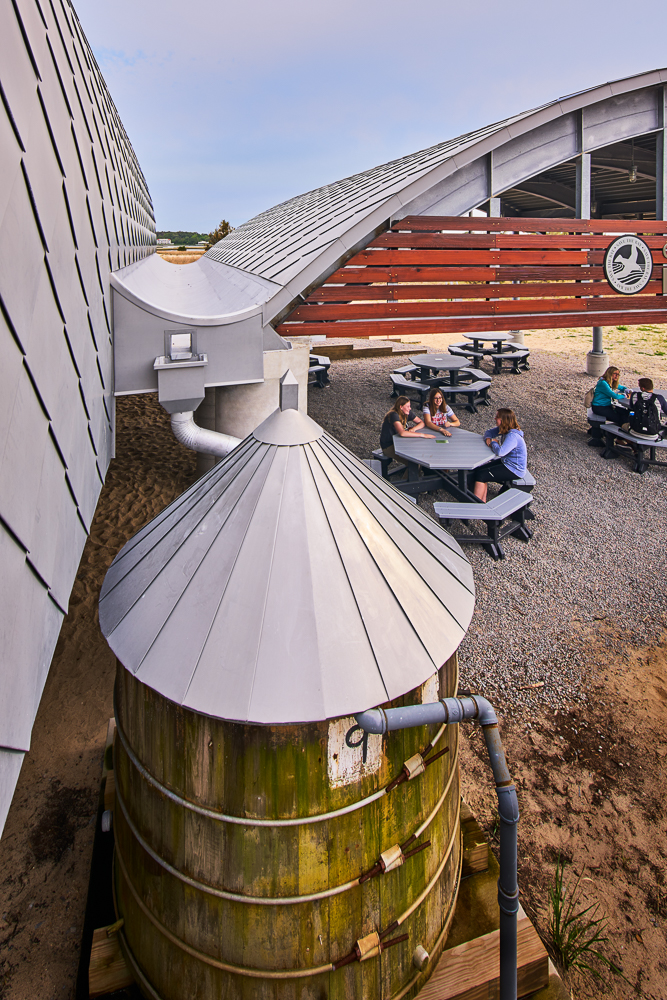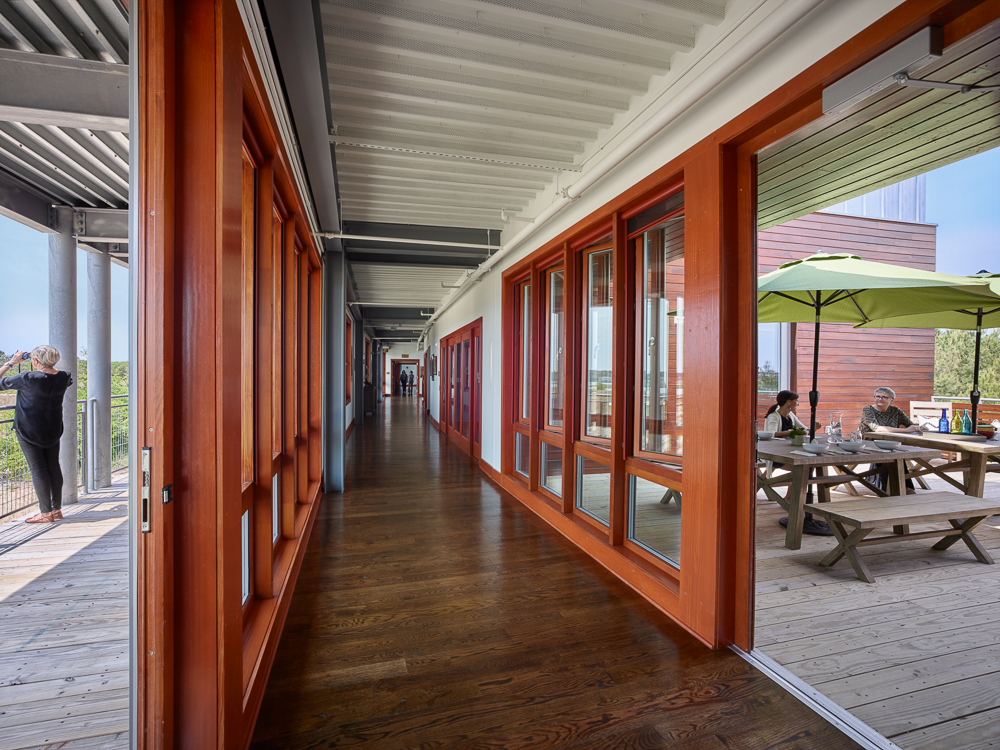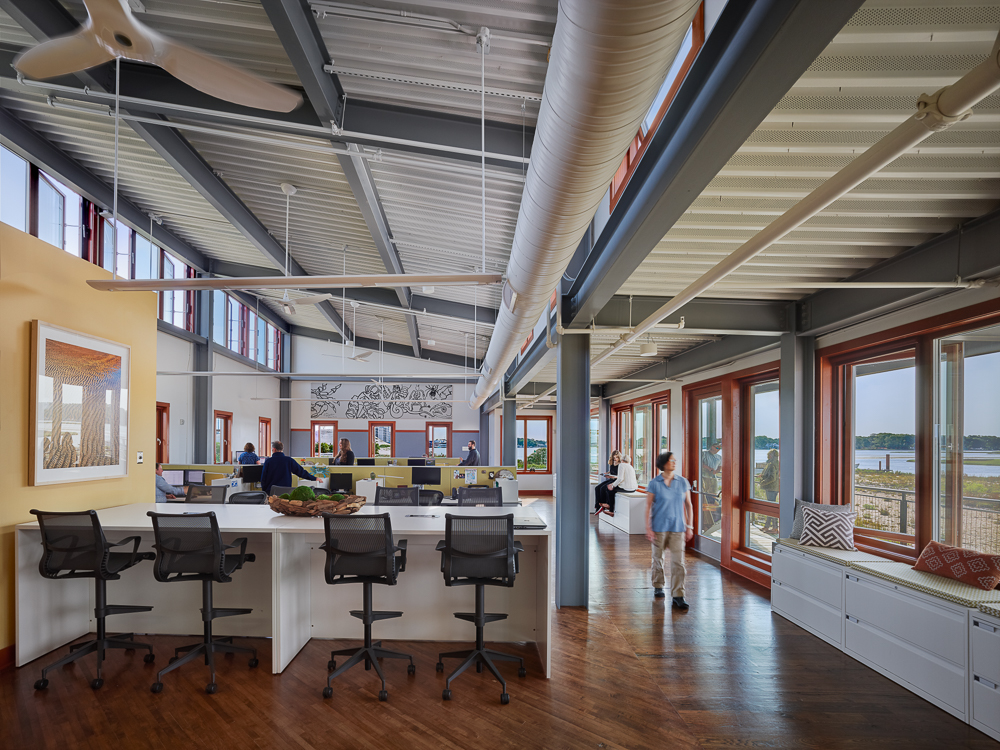This week, the Brock Environmental Center in Virginia Beach, Va., earned Living Building Challenge certification from the International Living Future Institute. The certification means the building produced more energy than it used for 12 consecutive months while meeting other sustainable criteria.
One feature that defines the Chesapeake Bay Foundation’s education building for the is rainwater filtration system that makes the rain drinkable. According to the building’s architect, SmithGroupJJR, the Brock Center is the first commercial building in the continental U.S. to be permitted to treat, to federal standards, harvested rainwater for potable uses. Rainwater is collected from the roof and stored in tanks below an elevated first floor. A filtration system renders the water suitable for drinking and hand washing.
The Brock Center also has waterless, composting toilets, and grey water from sinks and showers is filtered for use in an attached garden of native plants. Water is then naturally cleaned and returned to an underground aquifier.
SmithGroupJJR says the Brock Center generated 83% more energy than it used over the past year. Two 70-foot 10-kilowatt wind turbines and 168 solar panels were used to generate all of the building’s energy.
The 10,500-sf building also has sustainable features like natural daylighting and sunshading, natural ventilation, and geo-thermal heating and cooling.
The Brock Center was completed in November 2014 for $8 million.
(Click photos to enlarge. Photos: Prakash Patel, courtesy SmithGroupJJR.)
Related Stories
Green | Nov 8, 2022
USGBC and IWBI will develop dual certification pathways for LEED and WELL
The U.S. Green Building Council (USGBC) and the International WELL Building Institute (IWBI) will expand their strategic partnership to develop dual certification pathways for LEED and WELL.
Green | Oct 5, 2022
In California, a public power provider’s new headquarters serves as a test case for an innovative microgrid and for reducing greenhouse gas emissions
Sonoma Clean Power (SCP), the public power provider for California’s Sonoma and Mendocino Counties, recently unveiled its new all-electric headquarters.
Green | Oct 3, 2022
California regulators move to ban gas heaters for existing buildings
California regulators voted unanimously recently on a series of measures that include a ban on the sale of natural gas-powered heating and hot water systems beginning in 2030.
Mass Timber | Aug 30, 2022
Mass timber construction in 2022: From fringe to mainstream
Two Timberlab executives discuss the market for mass timber construction and their company's marketing and manufacturing strategies. Sam Dicke, Business Development Manager, and Erica Spiritos, Director of Preconstruction, Timberlab, speak with BD+C's John Caulfield.
Daylighting | Aug 18, 2022
Lisa Heschong on 'Thermal and Visual Delight in Architecture'
Lisa Heschong, FIES, discusses her books, "Thermal Delight in Architecture" and "Visual Delight in Architecture," with BD+C's Rob Cassidy.
Sponsored | | Aug 4, 2022
Brighter vistas: Next-gen tools drive sustainability toward net zero line
New technologies, innovations, and tools are opening doors for building teams interested in better and more socially responsible design.
Green | Jul 26, 2022
Climate tech startup BlocPower looks to electrify, decarbonize the nation's buildings
The New York-based climate technology company electrifies and decarbonizes buildings—more than 1,200 of them so far.
Sustainable Development | Jul 14, 2022
Designing for climate change and inclusion, with CBT Architects' Kishore Varanasi and Devanshi Purohit
Climate change is having a dramatic impact on urban design, in terms of planning, materials, occupant use, location, and the long-term effect of buildings on the environment. Joining BD+C's John Caulfield to discuss this topic are two experts from the Boston-based CBT Architects: Kishore Varanasi, a Principal and director of urban design; and Devanshi Purohit, an Associate Principal.
Building Team | Jul 1, 2022
How to apply WELL for better design outcomes
The International WELL Building Institute (IWBI) cites attracting top talent, increasing productivity, and improving environmental, social or governance (ESG) performance as key outcomes of leveraging tools like their WELL Building Standard to develop healthier environments.
Green | Jun 22, 2022
The business case for passive house multifamily
A trio of Passive House experts talk about the true costs and benefits of passive house design and construction for multifamily projects.


